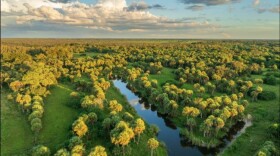Reynier Llanes’ curiosity cannot be contained. He traces its origins to his childhood in Cuba.
“My grandfather used to get all the grandkids at the table on Sundays, and after the meal, he would read us from Aesop’s Fables,” Llanes said. “Then we had to come up with the message of the story.”
“That experience taught him the value of using metaphors and allegories to paint visual stories.
“I felt it was a powerful tool for me to create ideas,” Llanes observed. “It's a magic realism that my work can deliver to the audience.”
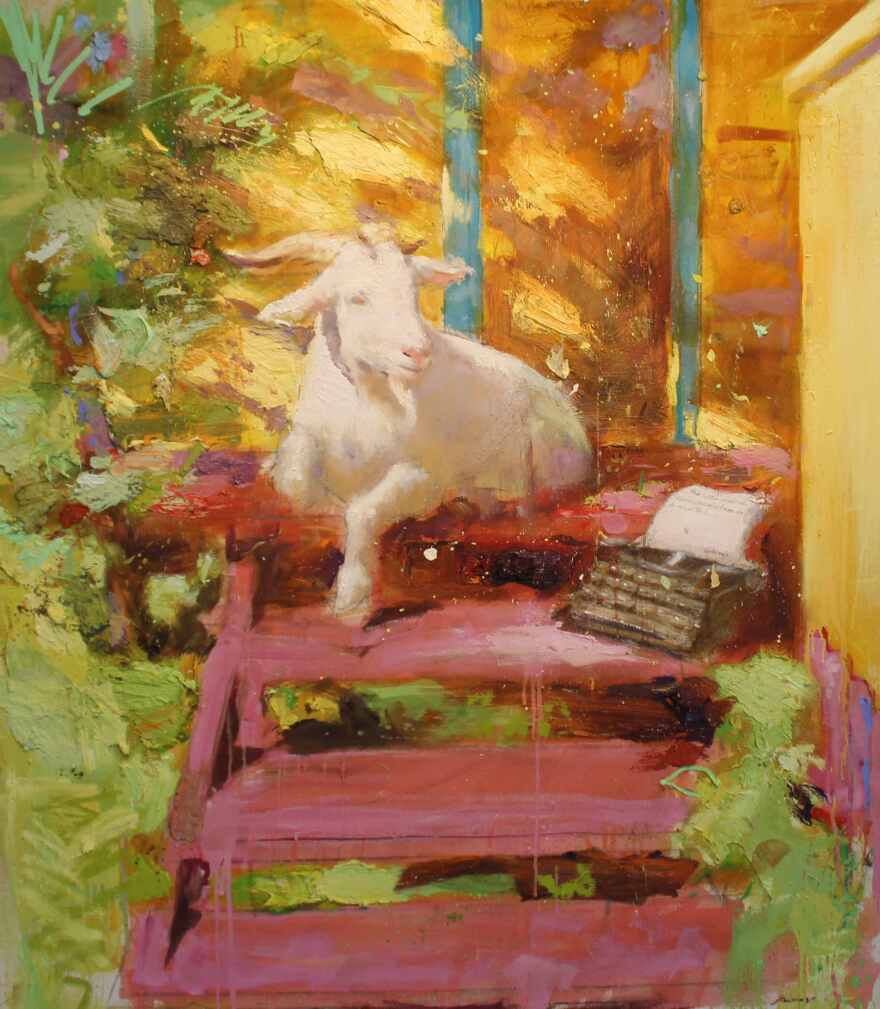
His flight from Cuba on a boat with 21 other emigrants also influences much of Llanes’ work.
“My art is about freedom,” Llanes noted. “I'm very intrigued about our past and our future and how I am responsible to my own life.”
Llanes also credits the pandemic with shaping the trajectory of his “Poets” and “Beekeepers” series of paintings. The latter probes the isolation engendered by masks and face coverings. It’s a topic Llanes feels keenly.

“Sometimes people say that what is the most difficult thing to be an artist? Are you going to be kind of struggling and all that kind of stuff? I think the essential struggle is to be in the studio by yourself, dialoguing with this vision that comes to your mind. It can be sometimes very psychological.”
According to BIG ARTS Gallery Director Wilson McCray, these divergent influences combine to form thought-provoking narratives.
“The show is almost completely unexpected — narratives filled with love and hope,” McCray said. “Everyone that comes into the gallery is actually hit kind of immediately with not just the paint and the light, but something physical.”
“Curious” is on view at BIG ARTS on Sanibel Island through Dec. 15.
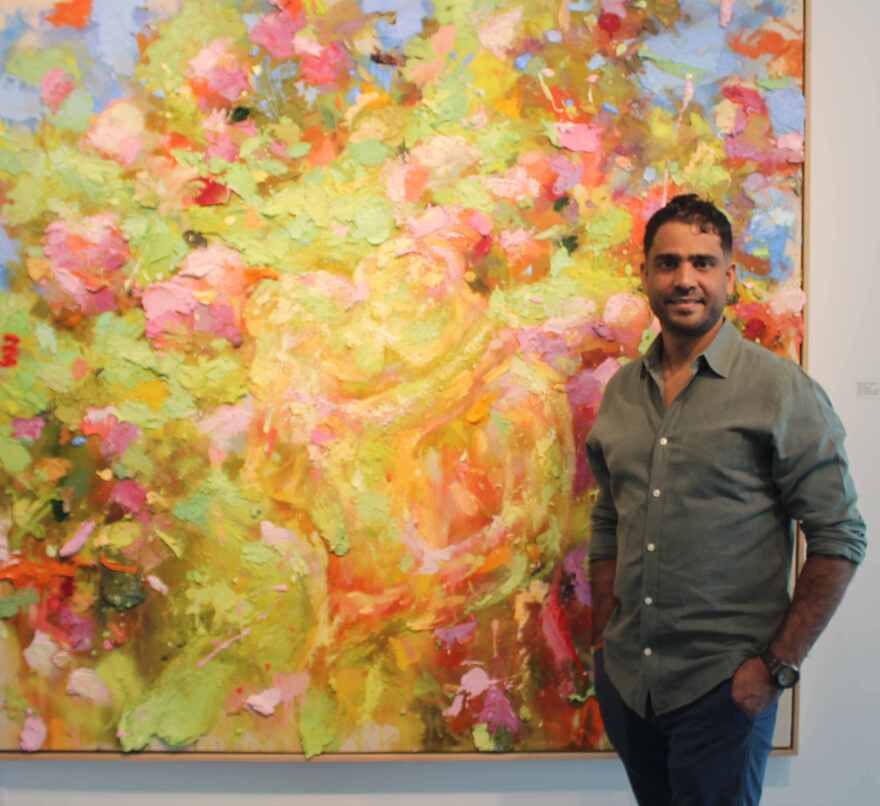
MORE INFORMATION:
Llanes joked that he knew he was destined for a career as a visual artist while he was still in his mother’s womb.
His earliest memories are drawing on a piece of paper in his backyard. But what sealed his fate was being taken by his parents to an art show.
“My mom and my dad took me to art events, and I felt like I wanted to be a creator.”

Born in Pinar del Rio, Cuba, in 1985, Llanes attended the city’s school of art (Instructores de Arte) for four years and completed his studies in 2004.
“Out of the blue, this school from the government programs opened and it was for the arts,” Llanes recounted. “There was music, dance, theater, and visual arts. One of my friends told me, hey, they're going to do this here in this province, Pinar del Rio, and so I was able to go into this school for four years. It was more like a vocation to become an art teacher, and I did teach for around two years and painting at the same time.”
However, Llanes felt that his prospects were bleak in Cuba at that time, not to mention that art supplies were scarce. So, he made the decision in 2005 to pursue the opportunities afforded to artists in the United States.
“I didn't tell anyone at first,” Llanes recalled. “I didn't want to get them involved in the process.”
He especially didn’t want to expose his family to blowback from the authorities. Plus, it wasn’t likely they’d support his decision given the dangers involved in navigating the treacherous Cuban Straits.
“I was young,” Llanes said, laughing. “I didn't know what I was going to encounter in that journey crossing the ocean, and if you ask me what's my biggest memory, it was the moment that it started raining. It was dark everywhere. The sky was dark. The ocean was dark. I saw my entire life passing through in front of me in less than 10 seconds. So, I say, if there’s a God, please consider our lives.”
They landed in the Tortugas.
“[The Coast Guard] rescued us from there, took us to Key West and from Key West, we were moved to Miami.”
He remained there for only a few days before moving in with some friends of his parents who lived in Lehigh Acres.

“Something inside of me was telling me I needed to take this risk or opportunity.”
While he’s never looked back, he imported a number of important lessons from his homeland into his paintings, not the least of which was his present penchant for using impasto in his compositions.
“I was classically trained,” Llanes explained. “Back in Cuba, I didn't have that much material, so I would [apply] just a little bit of paint. I carried that trauma here, even though we have the luxury to have these beautiful art stores that you go and you feel like a child in front of all these oils. We don't have that back there. But I still had that mental block that, oh, you have to use just a little bit of oil.”

Then the pandemic struck.
“Galleries, museums, everything that had to be related to art closed,” Llanes continued. “So I was questioning what is the future going to be for us?”
At that moment, he began ladling pigment onto his canvases in big globs like there’d be no tomorrow.
“I was more, I had this desire to use more oils, to use more texture as in a sculpture,” Llanes noted.
In fact, his use of impasto doesn’t just give his canvases a sculptural appearance.
“Sometimes I feel like paintings can be imprisoned,” Llanes said. “When I was a kid, my teacher would say you've got to color inside the lines. I was like, ‘I can't stay inside the lines.’ I like to go outside the lines.”
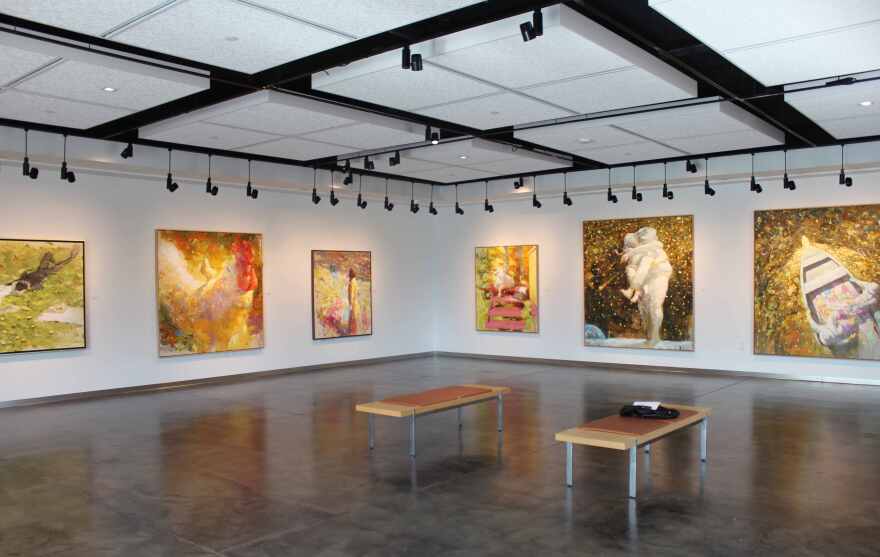
And Llanes does just that. A quick scan around the BIG ARTS gallery reveals a number of paintings where large swarths of impasto extend beyond the four corners of Llanes’ canvases.
Llanes leaned against the wall and peered across the surfaces of one canvas from its edge.
“It looks like a typography when I look at it from the side,” he said as though surveying mountainous terrain rising from a plain or valley. “It’s fun. It's kind of like painting and sculpturing at the same time.”
Most of the paintings on display at BIG ARTS are oil on canvas. But there are a couple of aberrations.

“One day I was doing a drawing for my final class,” Llanes recounted. “It was a portrait of a friend of mine. I was drinking coffee and spilled the coffee on that drawing. I thought my teacher was going to be terrified by seeing that. To the contrary, I found that I could do watercolor paintings using coffee. So I started doing coffee paintings and, in fact, there are two paintings made with coffee here in the show.”

Those paintings are titled “I Do” and “It’s For You, Sweetheart,” and they reinforce Llanes' conviction to utilize a variety of media in aid of the narratives his compositions convey.
“So I do watercolors, drawings and mixed media, but my longest relationship is with oils.”
Moreover, oils equip him to do what he loves most, and that’s working large-scale.
“I have a lot of fun doing the large paintings,” Llanes said. “It's kind of like a performance. Most of the time I'm listening to music, and if you see my work from the past five years, it has evolved into different connotations, how I use my colors and the brush strokes. It's very visceral. So I dance in front of the paintings doing large brush strokes, using a lot of pigment. Big canvases allow me to express myself in that way.”
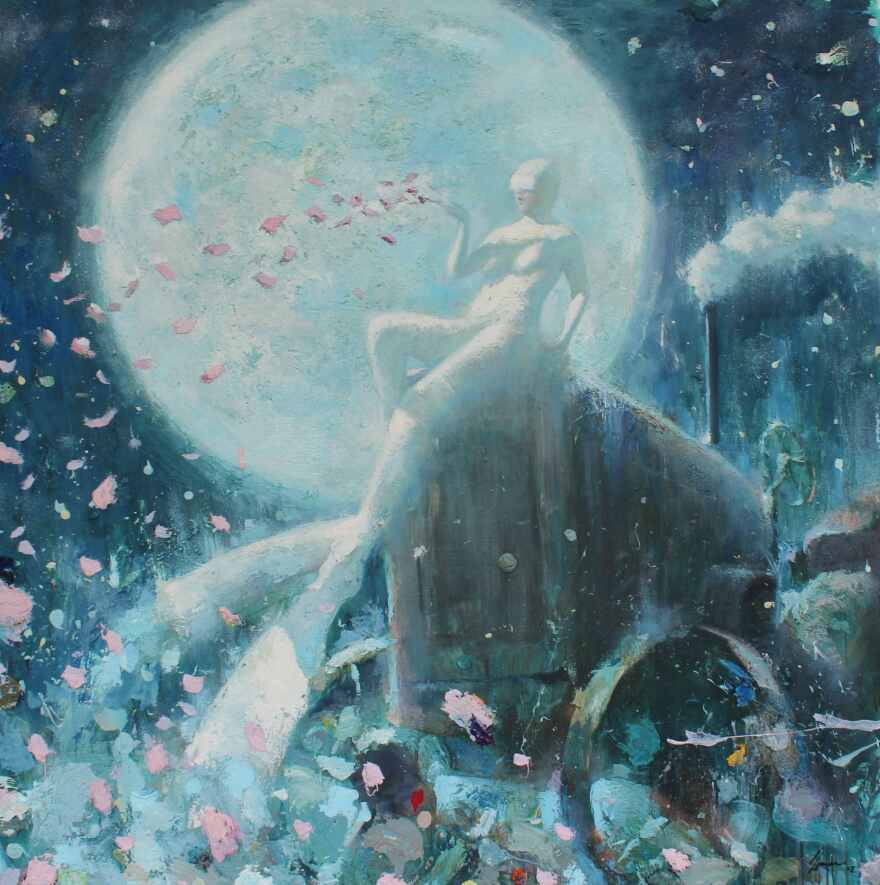
In addition to utilizing an abundance of pigment and extending his compositions beyond the edges of his canvases, Llanes' painting style has morphed from Realism into Impressionism.
“Impressionism allows me to leave more to viewers’ imaginations,” Llanes explained.
“That has a lot to do with the title of the show. I provide a line or some color and a viewer’s curiosity completes the picture. That better enables me to express concepts like power, flight, freedom and timelessness.”
It also gives viewers greater investment in his compositions since they have the latitude to decipher and interpret Llanes’ subjects and motifs.
“I want spectators to become the poets, to bring their own poetry to the work,” Llanes added.

In 2012 Oxford American recognized him as one of the “New Superstars of Southern Art.”
His work is represented by Harmon Meek Gallery in Naples, featured in public collections such as the Denver Art Museum and presented at The Butler Institute of American Art and the Polk Musuem of Art, among others.

Recent exhibitions include:
- “Steeped in Folklore: Recent Paintings by Reynier Llanes,” Morris Museum of Art, Augusta, Georgia
- “Pursuit of Grace,” Rutgers University, Camden, New Jersey
- “Brewing Expression,” Harmon-Meek Gallery, Naples, Florida
For more, visit reynierllanes.com.
Support for WGCU’s arts & culture reporting comes from the Estate of Myra Janco Daniels, the Charles M. and Joan R. Taylor Foundation, and Naomi Bloom in loving memory of her husband, Ron Wallace.







